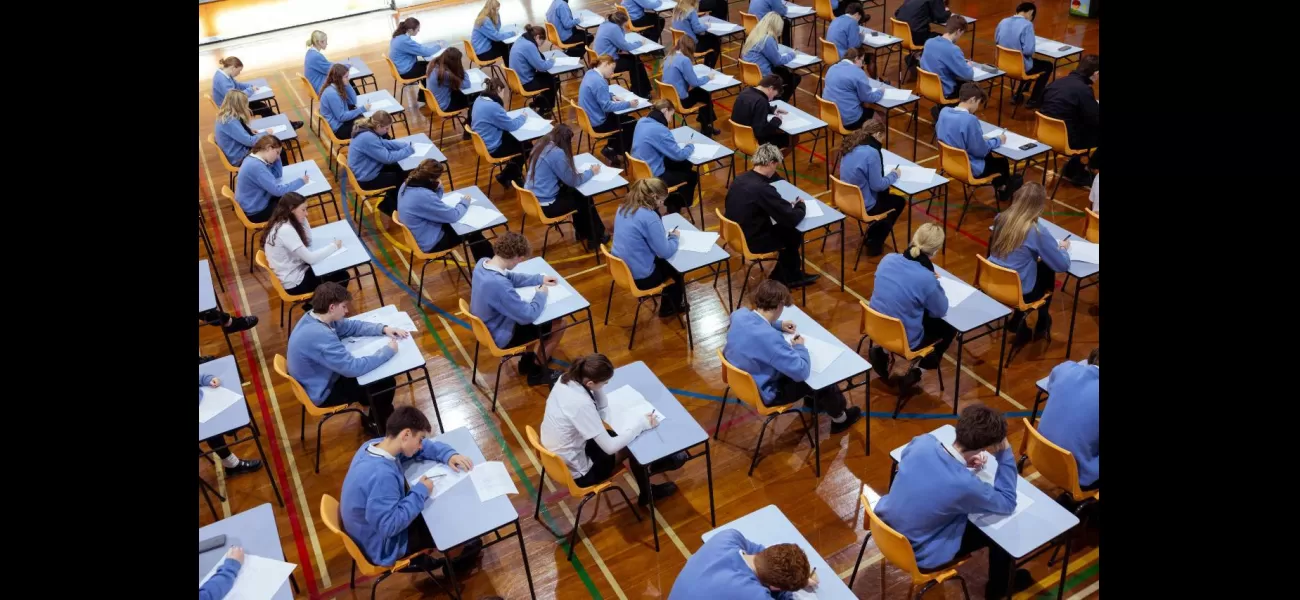Exam didn't go as planned? Room size may have been a factor.
New research suggests that students who take exams in big indoor spaces with high ceilings tend to have lower scores than expected.
July 3rd 2024.

According to a recent study, students may not be getting the best testing experience when taking exams in large, open spaces like halls and gymnasiums. Dr. Isabella Bower from the University of South Australia and Associate Professor Jaclyn Broadbent from Deakin University examined data from over 15,000 undergraduate students at an Australian university between 2011 and 2019. They compared the students' exam results with the height of the ceiling in the room where they took the test.
The researchers found that students tended to score lower than expected when taking exams in rooms with high ceilings. They took into account factors like the students' age, gender, time of year, and prior exam experience, but it was difficult to determine the exact impact of the room's size. Bower explained that other factors, such as overcrowding and poor insulation, could also affect the brain and body, making it hard to isolate the impact of the room's scale.
Bower noted that these large spaces are often not designed specifically for exams, but for other purposes like events or performances. She emphasized that the key point is that these rooms seem to put students at a disadvantage, and it's important to understand the brain mechanisms at play and how they affect student performance.
The researchers' findings align with previous experiments conducted by Bower using virtual reality technology. By measuring brain activity of participants in different rooms while controlling for other factors like temperature and noise, they found that simply being in a larger room can lead to increased brain activity associated with focusing on a difficult task.
Broadbent, a researcher in educational psychology, highlighted the implications of these findings for student performance in universities and schools. She explained that exams have been a crucial part of the education system for centuries and have a significant impact on students' future paths. In Australia, many institutions use large indoor spaces for exams to save on costs and streamline logistics. However, it's crucial to consider the potential impact of the physical environment on student performance and make necessary adjustments to ensure equal opportunities for all students to succeed.
The study was published in the Journal of Environmental Psychology, and its findings shed light on the importance of creating a conducive testing environment for students. By understanding the impact of the physical space on student performance, we can work towards improving the testing experience and ultimately, the outcomes of our education system.
The researchers found that students tended to score lower than expected when taking exams in rooms with high ceilings. They took into account factors like the students' age, gender, time of year, and prior exam experience, but it was difficult to determine the exact impact of the room's size. Bower explained that other factors, such as overcrowding and poor insulation, could also affect the brain and body, making it hard to isolate the impact of the room's scale.
Bower noted that these large spaces are often not designed specifically for exams, but for other purposes like events or performances. She emphasized that the key point is that these rooms seem to put students at a disadvantage, and it's important to understand the brain mechanisms at play and how they affect student performance.
The researchers' findings align with previous experiments conducted by Bower using virtual reality technology. By measuring brain activity of participants in different rooms while controlling for other factors like temperature and noise, they found that simply being in a larger room can lead to increased brain activity associated with focusing on a difficult task.
Broadbent, a researcher in educational psychology, highlighted the implications of these findings for student performance in universities and schools. She explained that exams have been a crucial part of the education system for centuries and have a significant impact on students' future paths. In Australia, many institutions use large indoor spaces for exams to save on costs and streamline logistics. However, it's crucial to consider the potential impact of the physical environment on student performance and make necessary adjustments to ensure equal opportunities for all students to succeed.
The study was published in the Journal of Environmental Psychology, and its findings shed light on the importance of creating a conducive testing environment for students. By understanding the impact of the physical space on student performance, we can work towards improving the testing experience and ultimately, the outcomes of our education system.
[This article has been trending online recently and has been generated with AI. Your feed is customized.]
[Generative AI is experimental.]
0
0
Submit Comment





